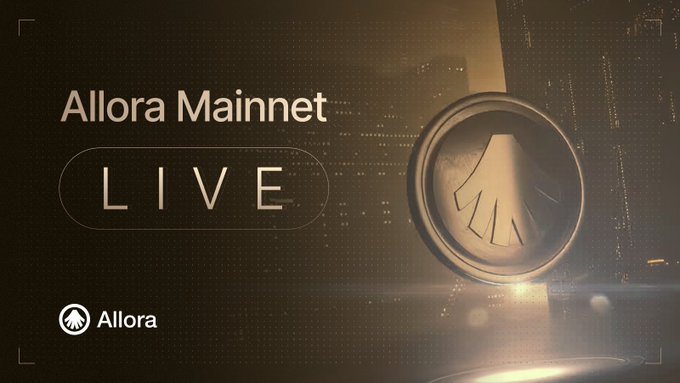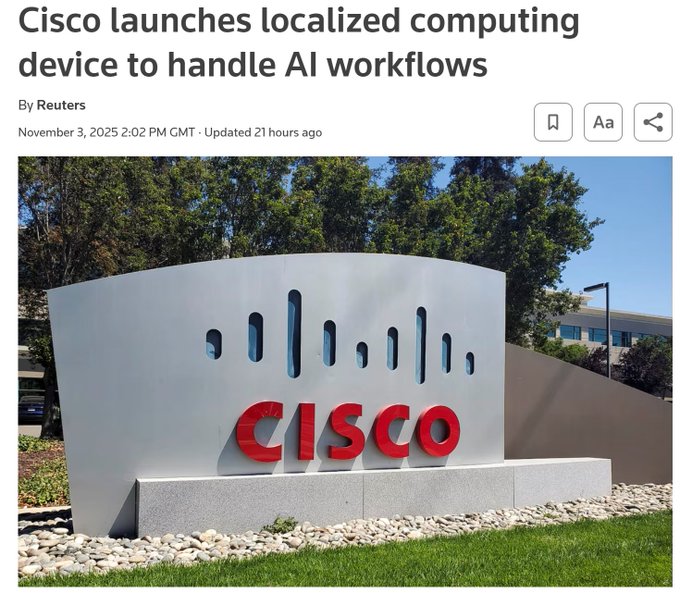dTelecom introduces decentralized infrastructure layer for real-time AI applications
dTelecom has launched a DePIN (Decentralized Physical Infrastructure Network) layer on Solana designed to support real-time AI operations. The platform addresses a critical gap in current AI infrastructure by providing the real-time coordination needed for AI agents and applications.
Key features include:
- Live coordination loop connecting AI agents, data, and users
- Sub-second latency across 4 continents
- APIs and SDKs for voice, video, and screen-share integration
- AI-native architecture for translation and moderation
The infrastructure challenge
While AI applications are moving to decentralized networks, most still rely on centralized communication infrastructure. dTelecom's solution provides verifiable, open-source real-time communication that can scale without vendor lock-in.
The platform offers developers transparent pricing and composable tools for building applications that require live interaction and coordination.
Available now
Developers can access dTelecom's API and SDK to integrate real-time capabilities into their applications. The infrastructure supports the growing demand for AI applications that need to coordinate and communicate in real-time across decentralized networks.
The 'next cycle' is going to be decided by who solves real bottlenecks, and not by who markets best. Everyone’s talking AI, DePIN, creator economy, modular chains - but the missing layer is still real-time. Sorry but no dApps, agents, protocols can/will coordinate without it.
Solana's AI ecosystem has a major new upgrade. The @OOBEonSol RPC gateway is now live, delivering sub 5ms latency built specifically for on chain AI agents. This is optimized infrastructure for next gen AI workloads, with deep SDK integration for OOBE Agents and PayAI (x402).
The 'Build Everything Onchain' movement is more than a narrative. It’s a functional blueprint for the real-time web. Today, @dTel_org, @magicblock, and @HivelloOfficial are stitching together the missing foundations: 💠 verifiable compute 💠 modular infrastructure 💠
Build everything onchain. It's no longer just a dream with: • Real-time performance • Zero fees • Privacy Only possible on @Solana with MagicBlock
While watching @durov's pitch on Blockchain Life, it became obvious that if AI moves to decentralized rails, comms must move with it. You can’t have private inference at the edge and ship the convos through centralized chokepoints. Durov's Cocoon targets the GPU leg; dTelecom
Real-time AI doesn’t work without real-time infra. Our DePIN layer enables that on Solana - bridging agents, data, and users in one live coordination loop. Wanna try - our API/SDK are at your service.
you have to be bullish on the future if Ai rn I mean, we have ai driven infrastructures that are finally solving real-world problems at scale like: @SentientAGI which is scaling its Open-source AGI stack that's built for; -developers -communities -modular agents &
Fact: AI is leaving the data center. Cisco’s $50B+ infra peers are moving compute to the edge. The next decade won’t be about bigger clouds, but rather about millions of micro-AI nodes proving their integrity in real time. That’s why we built @dTel_org: a verifiable mesh where
These days we face a shift in infrastructure gravity. 🔸AI is reprogramming how we create. 🔸DeFi is rewriting how we exchange value. 🔸And decentralized infra is redefining how we connect and communicate. That last part - real-time, verifiable, open - is where @dTel_org lives.
🚨 So much of what we see today feels controlled. Markets, media, even the flow of information seem shaped by a few powerful hands. The same pattern is now appearing in tech, where centralization creates creates single points of failure and control. As AI and digital
DePIN Market Set to Hit $3.5T by 2028, Surpassing Global Telecom

The **Decentralized Physical Infrastructure Networks (DePIN)** market is projected to reach **$3.5 trillion by 2028** - exceeding the entire global telecom industry's size. **Key Infrastructure Already Rebuilt:** - Storage solutions - Compute networks - Wireless infrastructure **The Missing Piece: Real-Time Communication** dTel_org aims to fill this gap with decentralized, verifiable, sub-second real-time communication (RTC). This targets the **$200 billion coordination layer** that powers internet infrastructure. **Economic Model Advantage:** When infrastructure is run by participants, operational costs transform into yield for node operators. This approach can deliver **up to 95% cost savings** compared to centralized APIs like AWS. **Revenue Distribution:** - 75% of traffic revenue goes to node operators - Increased usage drives increased capacity - Higher capacity reduces cost per gigabyte This model shifts communication infrastructure from a billable service to a **co-owned economy** where capacity pays users rather than users paying for capacity. [Read the full breakdown](https://blog.dtelecom.org/the-depin-market-explosion-why-3-5t-by-2028-changes-everything-857d388b0a87)
Frogy LIVE Powers Premium Video Through dTelecom's Decentralized Infrastructure
**Frogy LIVE** has integrated dTelecom's decentralized real-time communication (RTC) layer to power all premium video content on their platform. **Key Features:** - Scaled across continents using DePIN (Decentralized Physical Infrastructure) rails - Instant settlement in seconds - Real-time infrastructure enables real-time earnings for creators **Previous Success:** Frogy LIVE previously saved **$4,497** (85% cost reduction) by using dTelecom's infrastructure instead of traditional cloud solutions. Over two months, they processed 1.34M minutes of traffic for just $800 versus $5,297 with conventional pricing. **Impact for Creators:** The decentralized infrastructure provides creators with the tools to stream, earn, and scale their content instantly without the high costs and limitations of centralized platforms. This integration demonstrates how **DePIN technology** is making premium video streaming more accessible and profitable for content creators.
dTel Launches Verifiable Routing to Solve Enterprise Communication Compliance Crisis
**83% of enterprise communications** pass through undisclosed intermediaries, violating regional data laws according to NYT's April report. The EU's DSA and UK's Online Safety Act now make companies **liable for unknown routing paths** - if your call crosses undisclosed routes, you're responsible. **dTel's solution:** - Every node staked & registered on-chain - Cryptographic proofs for each relay - Real-time auditable routes from user to ledger This shifts from *privacy by policy* to **transparency by design**. For enterprises: compliance you can prove For builders: trust you can verify Audit trails become protocols, not PDFs.
AI Computing Shifts from Cloud to Edge with Verifiable Mesh Networks

**AI infrastructure is fundamentally shifting** from centralized data centers to distributed edge computing networks. - Cisco and other $50B+ infrastructure companies are moving compute closer to users - The next decade will focus on **millions of micro-AI nodes** rather than larger cloud systems - Each node must prove its integrity in real-time through verifiable processes **dTel_org has built a solution** - a verifiable mesh network where: - Every interaction (frame, packet, inference) is cryptographically signed - All processes are timestamped and trustless by design - Real-time AI operations can maintain data integrity This shift addresses critical issues with centralized systems: - **Unacceptable latency** for real-time applications - Data sovereignty concerns - Need for local processing of sensitive information The infrastructure enables secure, decentralized computation on locally-generated data while maintaining privacy and performance standards required for physical AI applications like robots, drones, and wearables.




